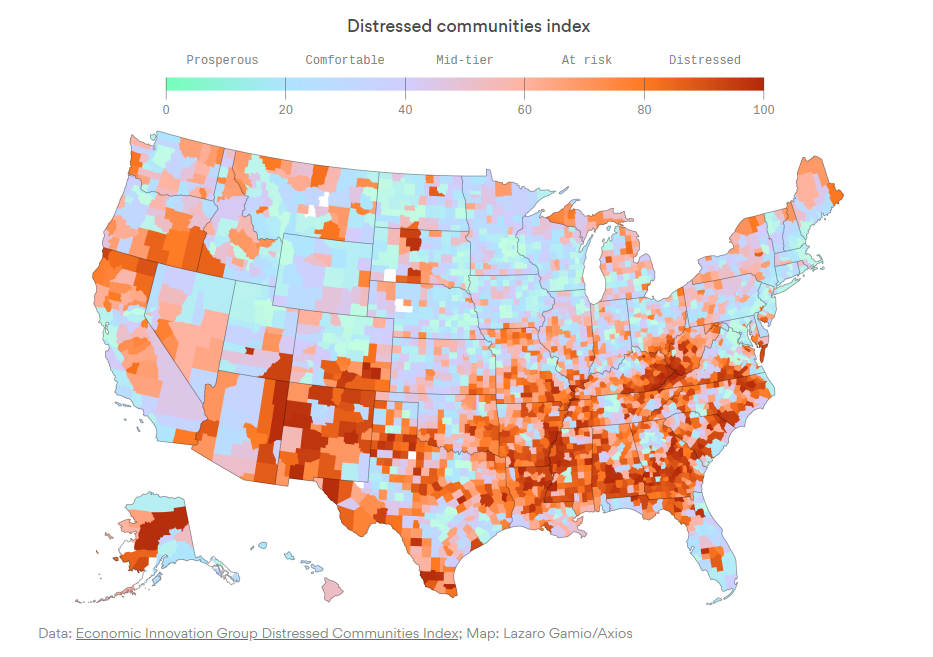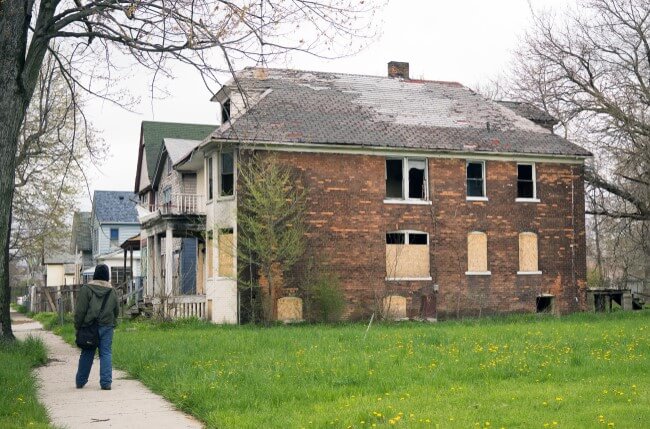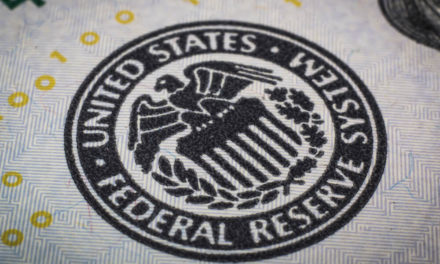Unemployment is at its lowest rate in nearly two decades, wages are up, stocks are setting new records, the GDP is soaring and the economy is booming under President Donald Trump.
But, according to an annual report by the Distressed Communities Index and highlighted by Axios, the spoils of recovery from the Great Recession have not been evenly distributed, leaving some 52 million Americans behind.
In fact, the lines between economic success and stagnation can literally be drawn on a map.

The information is from a county-by-county report last year from the nonprofit Economic Innovation Group, and it concludes that economic opportunity is most often tied to location.
• New jobs are clustered in the economy’s best-off places, leaving one of every four new jobs for the bottom 60% of zip codes.
• Most of today’s distressed communities saw zero net gains in employment and business establishment since 2000. In fact, more than half have seen net losses on both fronts.
• Half of adults living in distressed zip codes are attempting to find gainful employment in the modern economy armed with only a high school education at best.
The DCI covers more than 26,000 zip codes and 99.9 percent of the U.S. population, grouping its communities into five different tiers based on their performance on the index: prosperous, comfortable, mid-tier, at risk and distressed.
The 2017 DCI finds:
• 52.3 million Americans live in economically distressed communities — the one-fifth of zip codes that score worst on the DCI. That represents one in six Americans, or 17 percent of the U.S. population.
• By comparison, 84.8 million Americans live in prosperous communities — the one-fifth of zip codes that score best on the DCI. These top-performing zip codes contain 27 percent of the country’s population, a far greater share than any other tier.
• The average state has 15.2 percent of its population in a distressed community, but more than half of the Americans living in distressed communities reside in the South (compared to only 37.5 percent of the total population).
• Prosperity is far more evenly distributed across the country, with 26.5 percent of the population of the average state living in a prosperous zip code.
The DCI gives easy-to-understand, “compelling evidence that distressed communities are quite literally being left behind by the rest of the country.”
The performance gap between the average at risk and distressed zip code is significantly greater than the gap between any other two adjacent groups on six of the seven metrics of the index. Economic well-being is not only lower in distressed zip codes, but it falls away faster at the bottom end of the distribution.
From 2011 to 2015, the U.S. added 10.7 million jobs and 310,000 businesses and establishments, yet growth was limited to the top echelon of U.S. zip codes. According to the DCI, “85 percent of prosperous zip codes saw rising numbers of business establishments and 88 percent registered job growth.”
However, outside that upper echelon, the growth was far less significant.




